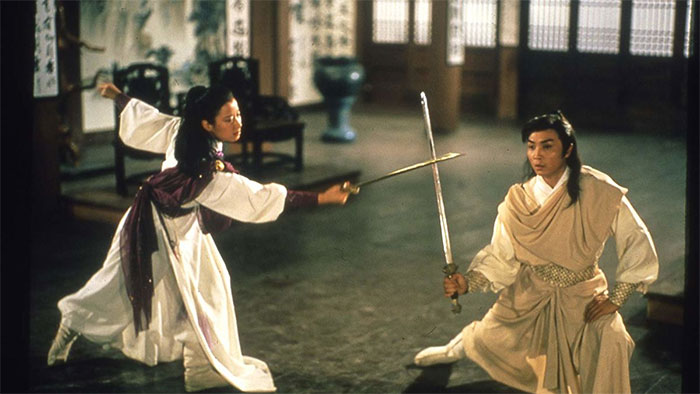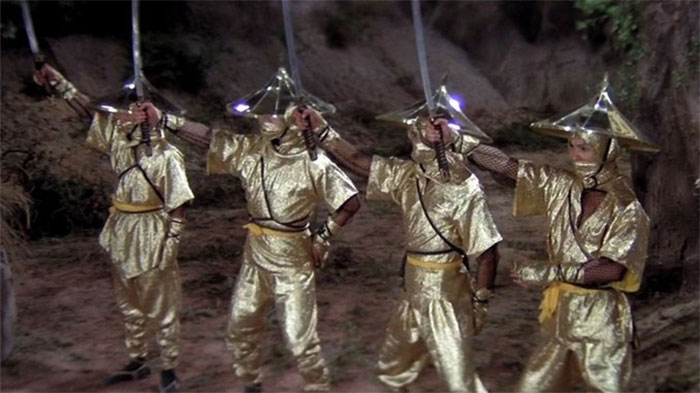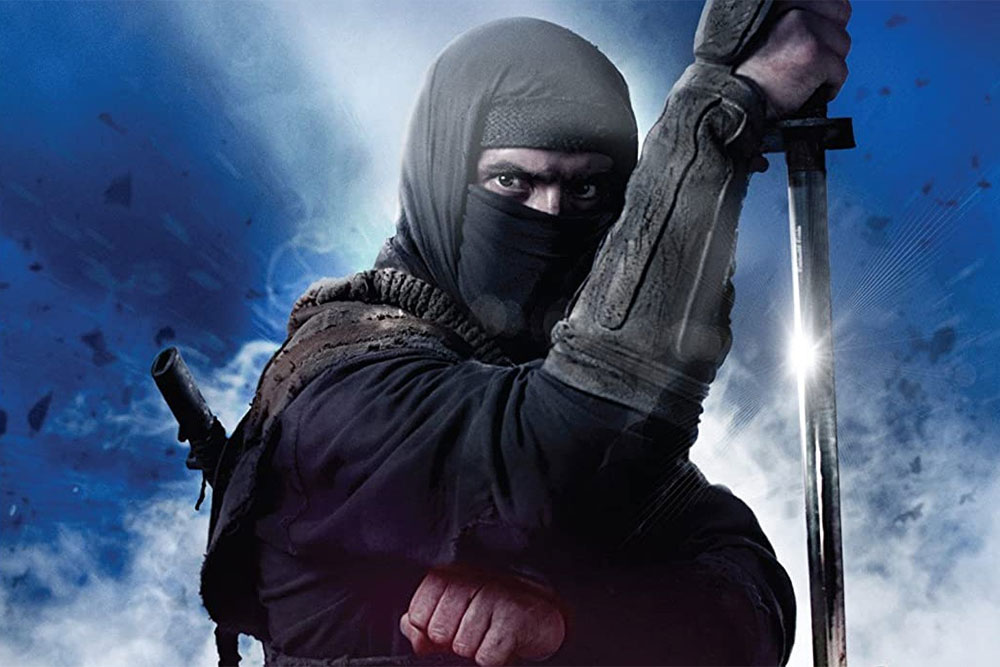Introducing some of the best ninja films ever released.
Let’s get one thing straight: Ninjas were (and, depending on who you ask, still are) a real thing. During the feudal era in Japan (mostly from the 15th century onwards), many isolated rural clans were resistant and even hostile to the idea of obeying the laws of the nobility – especially when they were enforced by the often oppressive samurai. Unable to face the costly and heavily equipped samurai in traditional combat, some of these reluctant clans developed unique martial arts techniques and fighting strategies based on mastery of the environment, along with weapons based on common tools and simple farming equipment, to even the odds in battle.
The field was “leveled” so effectively that the nobles began to hire the best of the so-called “ninja” of these clans as spies and mercenaries. They became in great demand due to their skills and willingness to do the “dirty work” that samurai often considered beneath their dignity. Two such clans, the Koga and Iga, became so renowned for their skilled ninja that some of them left their communities to become professional operatives for specific nobles or the shogunate itself. Some even managed to found their own “respected” houses/lines, which eventually became the basis for the “shadow warrior” archetype that ninjas are thought of today.
As befits professional assassins who are paid to carry out tasks that would today be called “black ops”, little is known about the actual activities of ninjas in Japanese history. Rather, the world learned about them primarily from Chinese historical fiction (the word “ninja” itself is an early Middle Chinese translation of the kanji 忍者, which reads “shinobi” in Japanese), where ninjas were popularized as examples of the treacherous, dishonest behavior expected of Japanese villains. This, of course, made them popular villains in the originally Chinese-centric martial arts film genre as well. And when so-called “kung fu movies” exploded in popularity around the world in the 70s and 80s, the legend of the ninja exploded along with it.
Here are the best films that came out of it.
Duel to the Death, 1983

Ching Siu-Tung was a choreographer in Hong Kong martial arts films for over ten years before he decided to direct his own film. The result was an explosion of fresh ideas and bold new techniques that divided genre critics, audiences and other filmmakers at the time, but is today widely seen as the beginning of Hong Kong action cinema’s transition from the Shaw Brothers’ “golden age” to a modern era that would lead to the birth of international superstars Jackie Chan, Jet Li and directors such as John Woo; intensifying previously forbidden bloodshed and sexuality while abandoning studio settings in favor of naturalistic camerawork and location shooting.
But more importantly for our purposes, the film redefined the ninja genre for decades. Gone were the colorful uniforms, black pajamas returned, and small teams were replaced by a glut of endlessly renewing foot soldiers who swarmed through action scenes like human firefighters – and that was just the beginning.
Like many other ninja-related films, the plot centers on an annual international martial arts competition that culminates in a ceremonial duel for national pride between the greatest swordsmen of China and Japan. But while the two main fighters face their inner demons while traveling to a tournament, other masters on the same trip are systematically kidnapped by ninjas as part of a sinister Japanese plan to steal the secrets of Chinese kung fu. Today the film is best remembered for its innovative sword fighting sequences, where fighters “double jump” for aerial attacks, bringing their swords under their feet and pushing off with their feet to stay in the air, but back then it was the actions of the new school ninja that got the talk.
And what kind of ninja is this! Ninjas in suicide vests, a pack of ninjas flying on giant kites, ninjas in holes, giant sized ninjas that split into five or six regular sized ninjas, ninjas flashing around in the nude as a distraction, sword play, smoke bombs, fire bombs balls and shurikens falling in thousands like deadly snowflakes; this is a complete set. There have never been such ninjas in cinema before, and all subsequent films are indebted to Duel to the Death.
Five Elements Ninjas, 1982

Chang Cheh, the “godfather of Hong Kong cinema”, directed nearly 100 films in his time and is considered one of the most important directors in the martial arts genre, if not in the entire history of Chinese cinema, thanks to such classics as “The Five Deadly Poisons” “, “Crippled Avengers”, “Water Line” and others. And with The Five Elements of Ninja, he helped establish the template that would guide almost all subsequent ninja films.
When a Chinese martial arts master kills a Japanese opponent in battle, his students find themselves pursued by a quintet of revenge-seeking ninjas whose attacks and fighting techniques are based on the elements of Water, Fire, Earth, Wood and Gold. Often cited as the popularizer of the “color-coded ninja” visual trope (red for fire, blue for water, etc.), the wide variety of weapons and styles (both real and fictional) helps Cech create some of the most impressive action sequences ever – including a bravura twenty-minute (really!) final segment in which the kung fu students defeat all five elemental teams with a barrage of new weapon techniques that has to be experienced to be believed.
Sword of Vengeance (Lone Wolf and Cub: Sword of Bengeance, 1972)
Also known as the “Baby Cart” series, one of the most famous samurai film franchises of all time began with this film, which featured ninjas as the main antagonists and inspired the graphic novel (and Tom Hanks hitman film) Road to Perdition “.
Plot: Ogami Itto, the shogun’s chief executioner, conspires against his rival Retsudo Yagyu, the master of the shogun’s personal ninja assassination squad. When his wife is killed, Itto goes on the run and becomes a mercenary ronin, taking with him his infant Daigoro in a specially equipped baby carriage, armored, bulletproof and equipped with hidden weapons that can be activated by both father and son (hence the name “Nursery”). stroller”). Together they travel through feudal Japan, working as soldiers of fortune and fending off attacks from the Yagyu ninja clan.
Ninja: Shadow of a Tear (2013)
Scott Adkins (soon to be seen in Doctor Strange) is the most dynamic Western martial arts star working in the B-movie scene today, beloved by hardcore action fans for his two sequels, Undisputed and Universal Soldier: The Reckoning But while the original Ninja was largely a forgotten affair aside from Adkins’ bone-crushing action scenes, Ninja: Shadow of a Tear is a true ninja classic.
Director Isaac Florentine, an Israeli action specialist who was one of the main directors and choreographers of the original Power Rangers series from “Mighty Morphin” to “Lightspeed Rescuers” (with whom Adkins frequently collaborated), directed “Shadow of a Tear” as a revenge story , which exists solely to create stunningly brutal, impeccably choreographed ninja fight scenes that showcase Adkins’ impressive physique.
Shaolin Challenges Ninja, 1978
Even though ninjas originated in Japan, the world’s popular culture’s understanding of ninjas is based almost entirely on their portrayal in Chinese martial arts films. The film “Shaolin Challenges the Ninja” (alternative titles “Heroes of the East” and “Challenge of the Ninja”) is one of the classic films of the genre of all time, directed by the legendary Lau Kar-Lin (“The 36th Chamber of Shaolin”, “Master of the Flying Guillotine”, “My Young Aunt”, “Drunken Master II”) starring Gordon Liu (“Kill Bill”, “Eight Diagram Pole Fighter”).
Liu is a Chinese student of Shaolin kung fu who is outraged to learn that his businessman father has arranged his marriage to the daughter of a Japanese companion, but decides not to give up after weighing his options (Cons: lifelong commitment, had no say, no knows this woman. Pros: She is very sexy). However, upon learning that his new bride is also a martial artist, they quarrel over their professional ideals (Japanese karate is “undignified”, Chinese weapons are “inelegant”, etc.) and especially over her knowledge of the art ninja, which he considers dishonest. But when she gets angry and returns to Japan (to her former ninjutsu instructor boyfriend), Liu plans to win her back by organizing an invitational fighting tournament between China and Japan, which he knows she won’t refuse. Mostly, it’s just an excuse to showcase some impressive interdisciplinary bouts, with Liu testing his signature three-piece staff technique against a nunchuck-wielding Bruce Lee impersonator.
Teenage Mutant Ninja Turtles, 1989
Whatever the other merits of the vast number of TMNT adaptations that have been on screens for years, the first action film stands out against all odds as a truly solid action movie that has no earthly reason to hold up as well as it does. This is largely due to the strong aesthetic decision that the story takes place in the dark urban noir of the original independent comics (a brutal satire of Frank Miller’s Daredevil) that launched the franchise, and the titular Turtles themselves are depicted in the style of their more vivid incarnations in the animated series.
The result is a shockingly compelling action thriller with a sense of real stakes and a surprising amount of heart (what “children’s movie” today would slow down for a meditative journey to a farm in the second act?), built around a set of truly thrilling ninja battles that were much more intense than children raised on slapstick cartoons expected. The result blew the minds of an entire generation… and outraged so many parents that the Turtles were forced not to use weapons in the sequel.
You Only Live Twice (007: You Only Live Twice, 1967)
One of the greatest ninja-centric action films of all time, and easily one of the best original James Bond films… if you can look past all the incredibly uncomfortable (even by James Bond standards) racism – which is easier said than make in a film whose central plot point is that Sean Connery can “become Japanese” by wearing skin-darkening makeup and black hair dye. Aaaand.
It’s a shame because the film has the best Bond (Connery), the best Bond villain (Donald Pleasence as Ernst Stavro Blofeld), the best Bond villain lair (a missile base hidden inside a hollow volcano) and the best final Bond action sequence: 007 leads ninja army to storm the volcanic base. The film even has one of the wittiest scripts of the Connery era, thanks to Roald Dahl (really!) handling the adaptation. It’s a pity that the film’s second act (built around a “Japaneseized” Bond) is so deeply indigestible.



